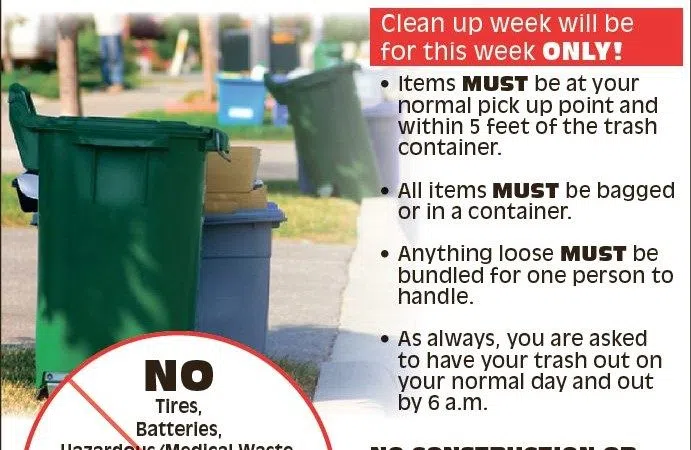Release Issued by FEMA: FEMA and FCC Plan Nationwide Emergency Alert Test for Oct. 4, 2023
The national test will consist of two portions, testing WEA and EAS capabilities. Both tests are scheduled to begin at approximately 2:20 p.m. ET on Wednesday, Oct. 4.
The WEA portion of the test will be directed to all consumer cell phones. This will be the third nationwide test, but the second test to all cellular devices. The test message will display in either English or in Spanish, depending on the language settings of the wireless handset.
The EAS portion of the test will be sent to radios and televisions. This will be the seventh nationwide EAS test.
FEMA and the FCC are coordinating with EAS participants, wireless providers, emergency managers and other stakeholders in preparation for this national test to minimize confusion and to maximize the public safety value of the test.
The purpose of the Oct. 4 test is to ensure that the systems continue to be effective means of warning the public about emergencies, particularly those on the national level. In case the Oct. 4 test is postponed due to widespread severe weather or other significant events, the back-up testing date is Oct. 11.
The WEA portion of the test will be initiated using FEMA’s Integrated Public Alert and Warning System (IPAWS), a centralized internet-based system administered by FEMA that enables authorities to send authenticated emergency messages to the public through multiple communications networks. The WEA test will be administered via a code sent to cell phones.
This year the EAS message will be disseminated as a Common Alerting Protocol (CAP) message via the Integrated Public Alert and Warning System-Open Platform for Emergency Networks (IPAWS-OPEN).
All wireless phones should receive the message only once. The following can be expected from the nationwide WEA test:
Beginning at approximately 2:20 p.m. ET, cell towers will broadcast the test for approximately 30 minutes. During this time, WEA-compatible wireless phones that are switched on, within range of an active cell tower, and whose wireless provider participates in WEA, should be capable of receiving the test message.
For consumers, the message that appears on their phones will read: “THIS IS A TEST of the National Wireless Emergency Alert System. No action is needed.”
Phones with the main menu set to Spanish will display: “ESTA ES UNA PRUEBA del Sistema Nacional de Alerta de Emergencia. No se necesita acción.”
WEA alerts are created and sent by authorized federal, state, local, tribal and territorial government agencies through IPAWS to participating wireless providers, which deliver the alerts to compatible handsets in geo-targeted areas. To help ensure that these alerts are accessible to the entire public, including people with disabilities, the alerts are accompanied by a unique tone and vibration.
Important information about the EAS test:
The EAS portion of the test is scheduled to last approximately one minute and will be conducted with the participation of radio and television broadcasters, cable systems, satellite radio and television providers and wireline video providers.
The test message will be similar to the regular monthly EAS test messages with which the public is familiar. It will state: “This is a nationwide test of the Emergency Alert System, issued by the Federal Emergency Management Agency, covering the United States from 14:20 to 14:50 hours ET. This is only a test. No action is required by the public.
Conspiracy theories about FEMA’s Oct. 4 emergency alert test spread online
(Associated Press) Published 1:47 PM CDT, September 25, 2023
CLAIM: An emergency broadcast system test on Oct. 4 will send a signal to cell phones nationwide in order to activate nanoparticles such as graphene oxide that have been introduced into people’s bodies.
AP’S ASSESSMENT: False. Next month’s test of the nationwide Emergency Alert System uses the same familiar audio tone that’s been in use since the 1960s to broadcast warnings across the country. A spokesperson for the Federal Emergency Management Agency, which is overseeing the test, also said there are no known adverse health effects from the signal. The claims revive long-debunked conspiracy theories about the contents of the COVID-19 vaccine.
THE FACTS: Social media users are raising dire warnings about upcoming tests of the national emergency warning system.
Many are imploring their followers to shut off their cellphones on the day of the test because they believe it’s part of a broader conspiracy to exert control over the population.
One popular video shows a woman claiming the test will somehow switch on technology that has been introduced into people’s bodies.
“The emergency broadcasting system under FEMA is going to be activated,” the woman explains, speaking directly into the camera. “It’s not a test. It’s going to be sending these high frequency signals into cell phones, radios, TVs. The intention of activating nanoparticles, including graphene oxide.”
In another widely shared video, a man issues a similar warning, adding that graphene oxide and other nanoparticles have been inserted into billions of human beings around the world “through obvious mediums.”
“Everyone will be affected, regardless of status,” he adds in the video, which was widely shared on X, the social media platform formerly known as Twitter, along with the hashtag “CovidVaccine.”
But while FEMA is conducting a routine test of its emergency warning system next month, there is no truth to the claim that it will emit a wireless signal that will somehow activate graphene oxide or nanoparticles in the body.
Stanley Perlman, professor of microbiology and immunology at the University of Iowa in Iowa City, said the claims appear to be referring to old myths about the contents of COVID vaccines.
These baseless conspiracy theories claim — without evidence — that the vaccines contain various materials, such as graphene oxide or other nanoparticles, that can interact with wireless communications technology. They claim that the materials, when activated, can allow governments to control and monitor people.
But graphene oxide — a material made by oxidizing graphite — isn’t an ingredient in the COVID vaccine, notes Matthew Laurens, a pediatric infectious disease specialist with the Center for Vaccine Development and Global Health at the University of Maryland School of Medicine.
“Graphene oxide is not in the mRNA-based vaccines for COVID-19 manufactured by Pfizer/BioNTech or Moderna,” he wrote in an email Monday. “Graphene oxide was used to study vaccine structure only, and is not part of the vaccine formulation.”
Regardless, the notion that graphene oxide can be “activated” in this way is “nonsense,” wrote Julia Greer, a materials science professor at the California Institute of Technology in Pasadena who has used graphene oxide in her research, in an email Monday.
“You can’t ‘activate’ graphene oxide,” she wrote. “What does that even mean?”
The actual nanoparticles in the vaccines, meanwhile, are lipids, or fats, that are generally used as a coating material. They’re sometimes described as “programmable” because they can be modified and adjusted, depending on the need, experts have said. It does not mean they can be programmed to interact with wireless networks.
There’s also nothing nefarious about the routine test FEMA and the Federal Communications Commission are conducting next month.










Comments